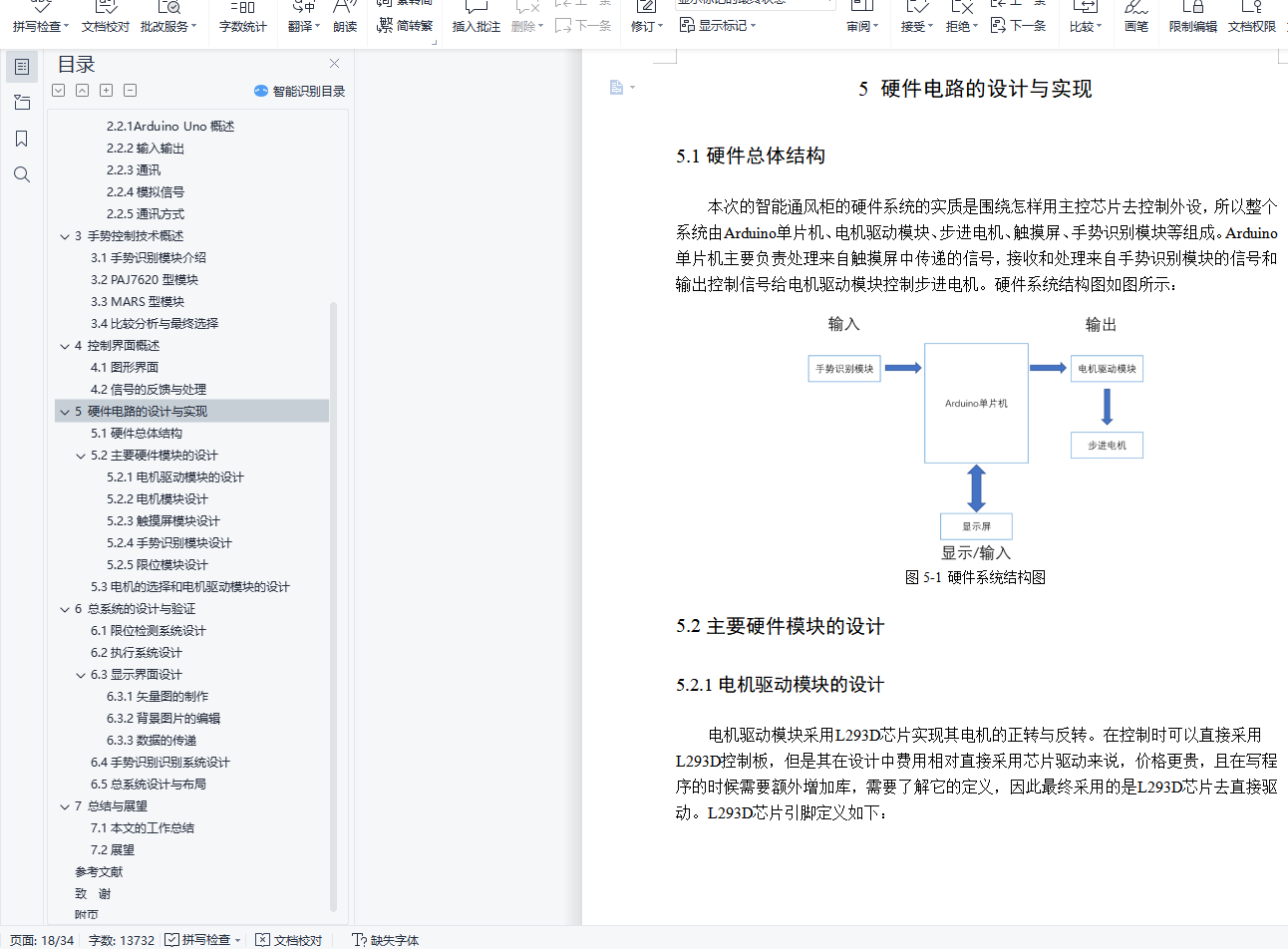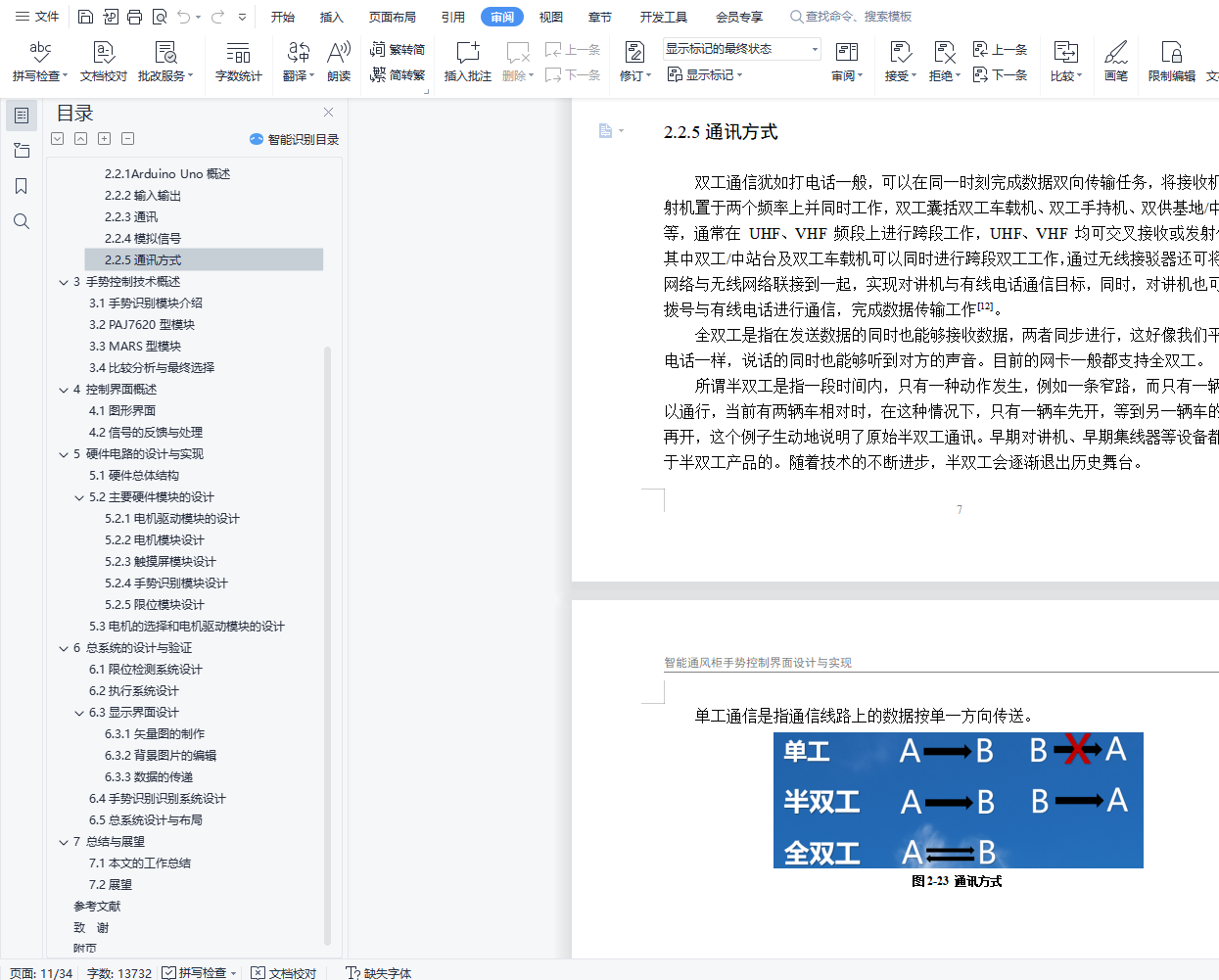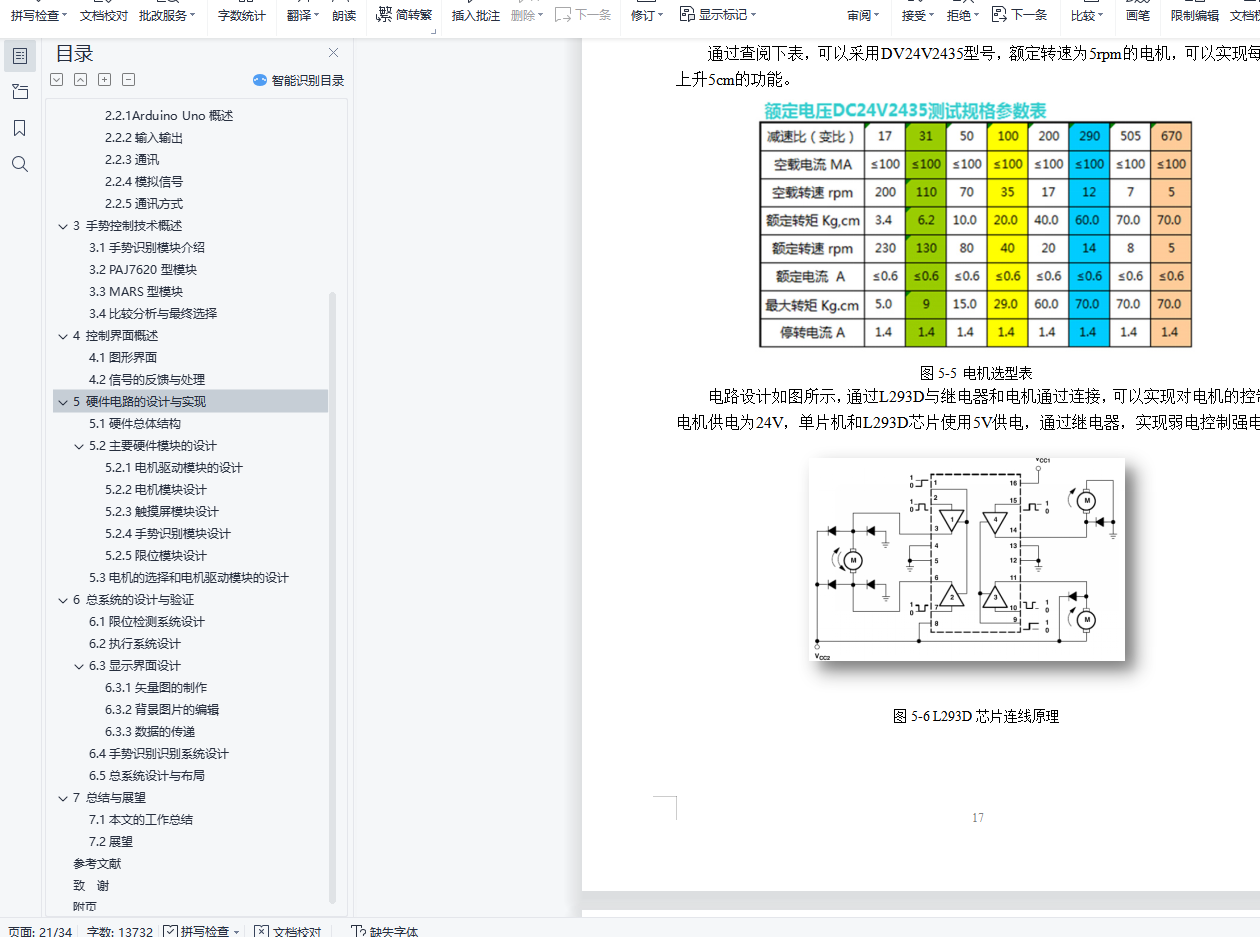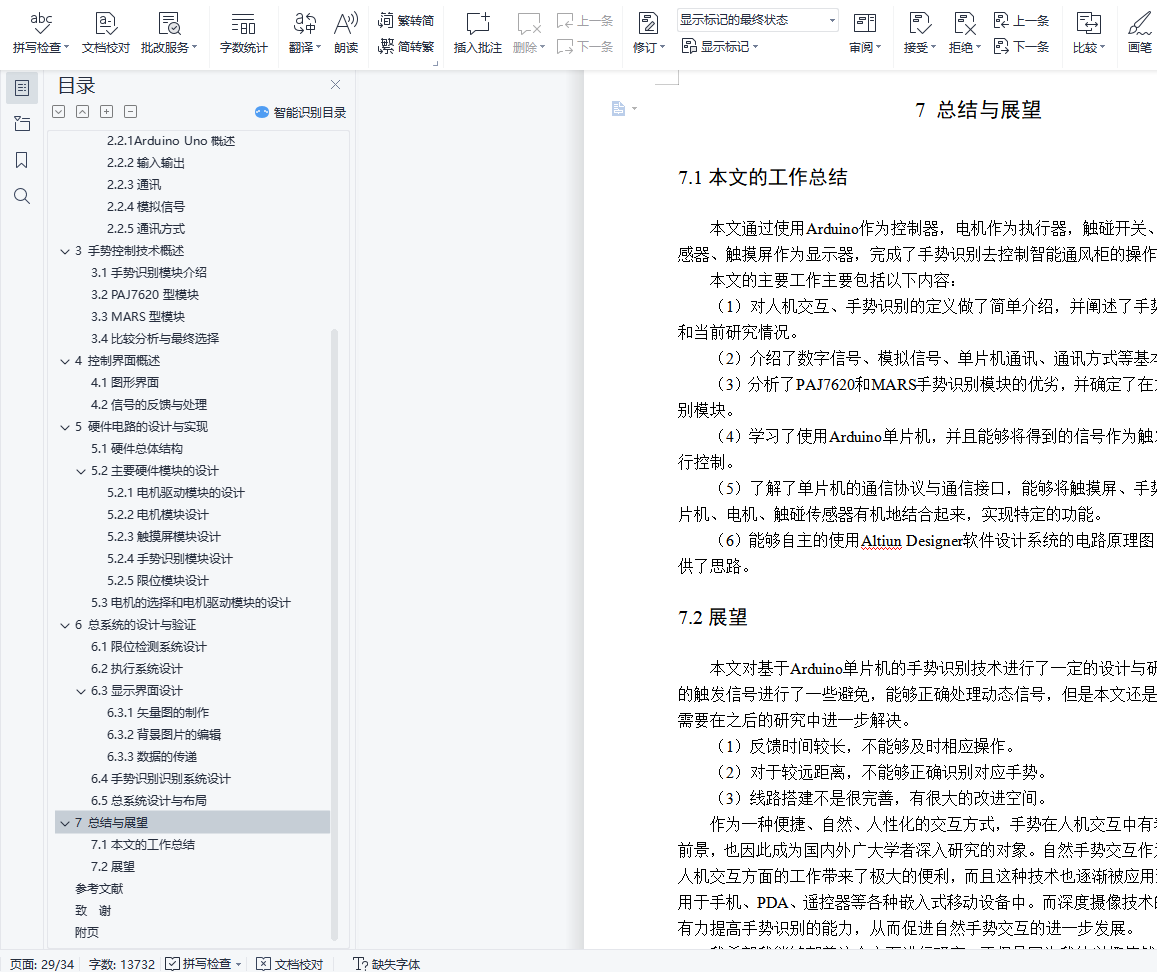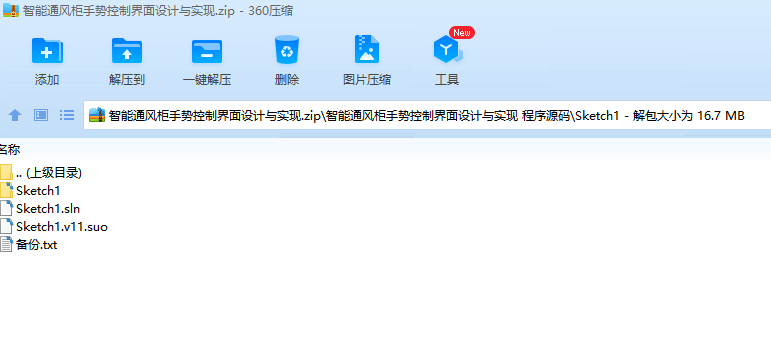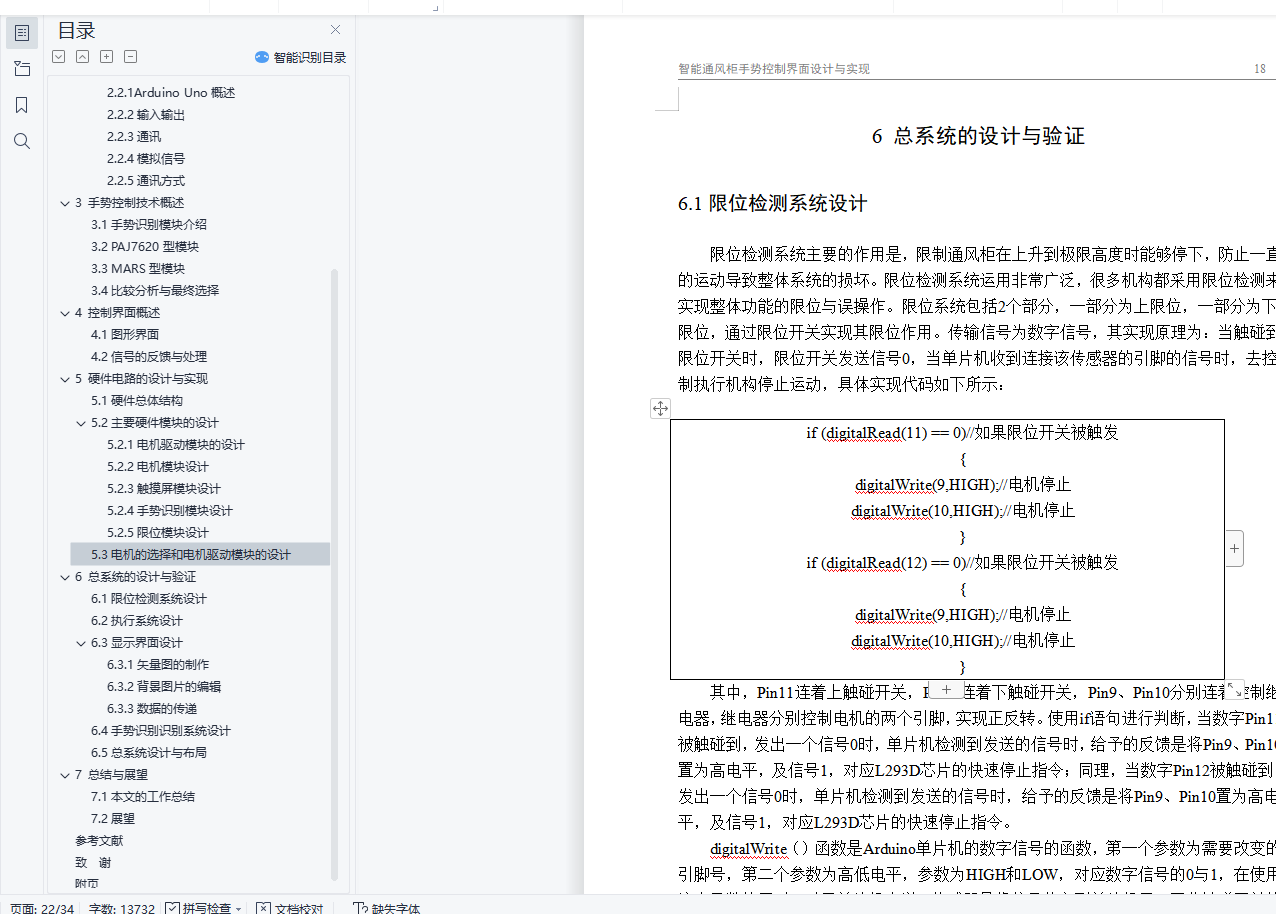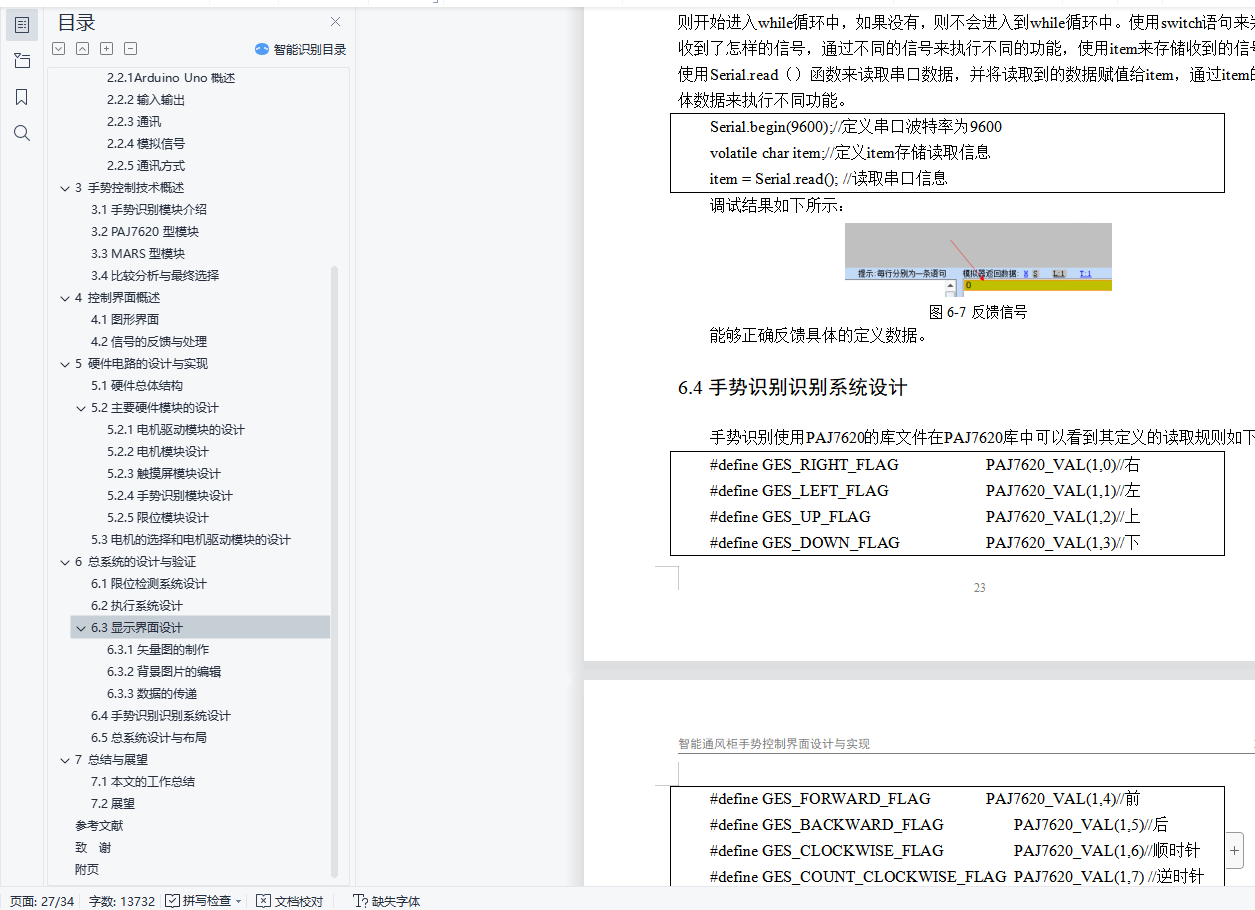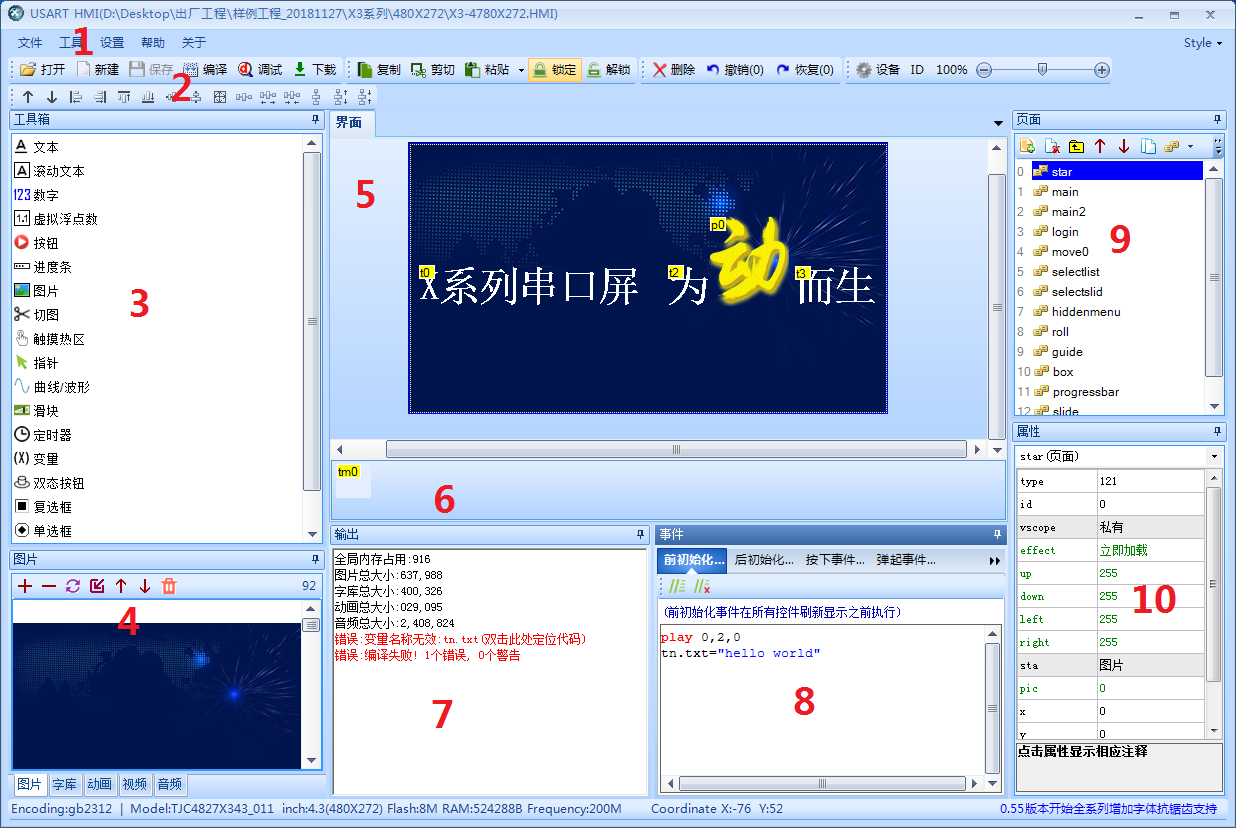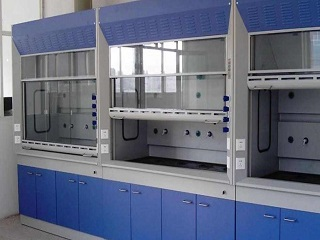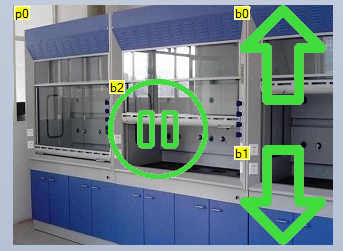摘 要
随着传感器的不断发展,简单的信号已经不能满足人们日益增长的对控制的需求。同时,为了方便,传感器向着简化生活的方向不断发展。对于普通的通风柜来说,它单一的功能不能满足简化生活的目的,因此出现了智能通风柜。智能通风柜在单片机的作用下,把输入设备与输出设备有机的结合起来,不仅可以简化操作流程,同时其智能的操作,不仅能够出色的完成当前的任务,同时节省时间,加快工作效率。
关键词:传感器,手势识别, 控制界面,单片机
ABSTRACT
With the continuous development of sensors, simple signals can no longer meet the growing demand for control. At the same time, for convenience, sensors are developing in the direction of simplifying life. For ordinary ventilation cabinet, its single function can not meet the purpose of simplifying life, so there is intelligent ventilation cabinet. Intelligent ventilation cabinet, under the function of single-chip computer, combines input equipment and output equipment organically, not only can simplify the operation process, but also its intelligent operation can not only accomplish the current task, but also save time and speed up work efficiency.
Key words: sensor,Gesture Recognition,Control Interface,Single Chip Microcomputer
目 录
1 绪论 1
1.1课题研究背景和意义 1
1.2国内外研究现状和发展 1
1.3研究内容 2
1.3.1单片机的通讯 2
1.3.2单片机的数据处理 2
1.3.3操作界面的设计与数据显示 3
1.4研究方案 3
2单片机概述 4
2.1单片机介绍与选择 4
2.2 Arduino单片机控制原理 4
2.2.1Arduino Uno概述 4
2.2.2输入输出 5
2.2.3通讯 5
2.2.4模拟信号 6
2.2.5通讯方式 7
3 手势控制技术概述 9
3.1手势识别模块介绍 9
3.2 PAJ7620型模块 9
3.3 MARS型模块 10
3.4比较分析与最终选择 11
4 控制界面概述 12
4.1图形界面 12
4.2信号的反馈与处理 12
5 硬件电路的设计与实现 14
5.1硬件总体结构 14
5.2主要硬件模块的设计 14
5.2.1电机驱动模块的设计 14
5.2.2电机模块设计 16
5.2.3触摸屏模块设计 16
5.2.4手势识别模块设计 16
5.2.5限位模块设计 16
5.3电机的选择和电机驱动模块的设计 16
6 总系统的设计与验证 18
6.1限位检测系统设计 18
6.2执行系统设计 19
6.3显示界面设计 21
6.3.1矢量图的制作 21
6.3.2背景图片的编辑 21
6.3.3数据的传递 22
6.4手势识别识别系统设计 23
6.5总系统设计与布局 24
7 总结与展望 25
7.1本文的工作总结 25
7.2展望 25
参考文献 27
致 谢 28
附页 29
